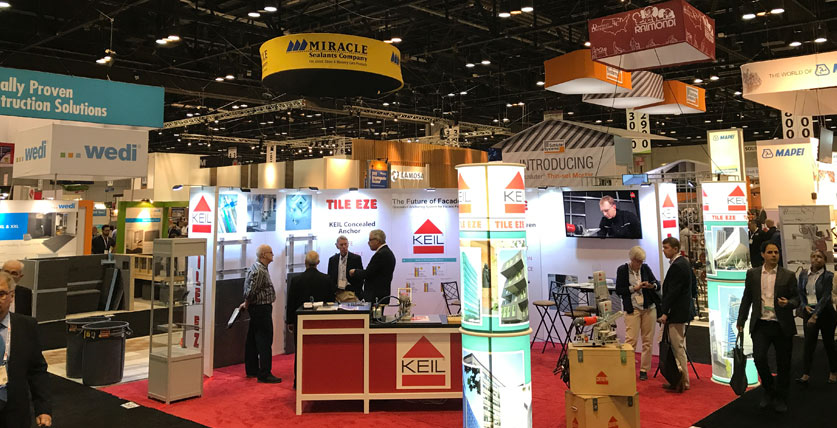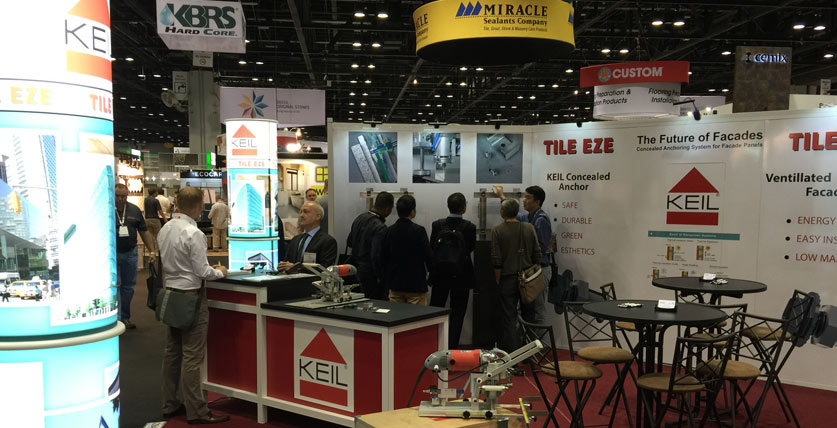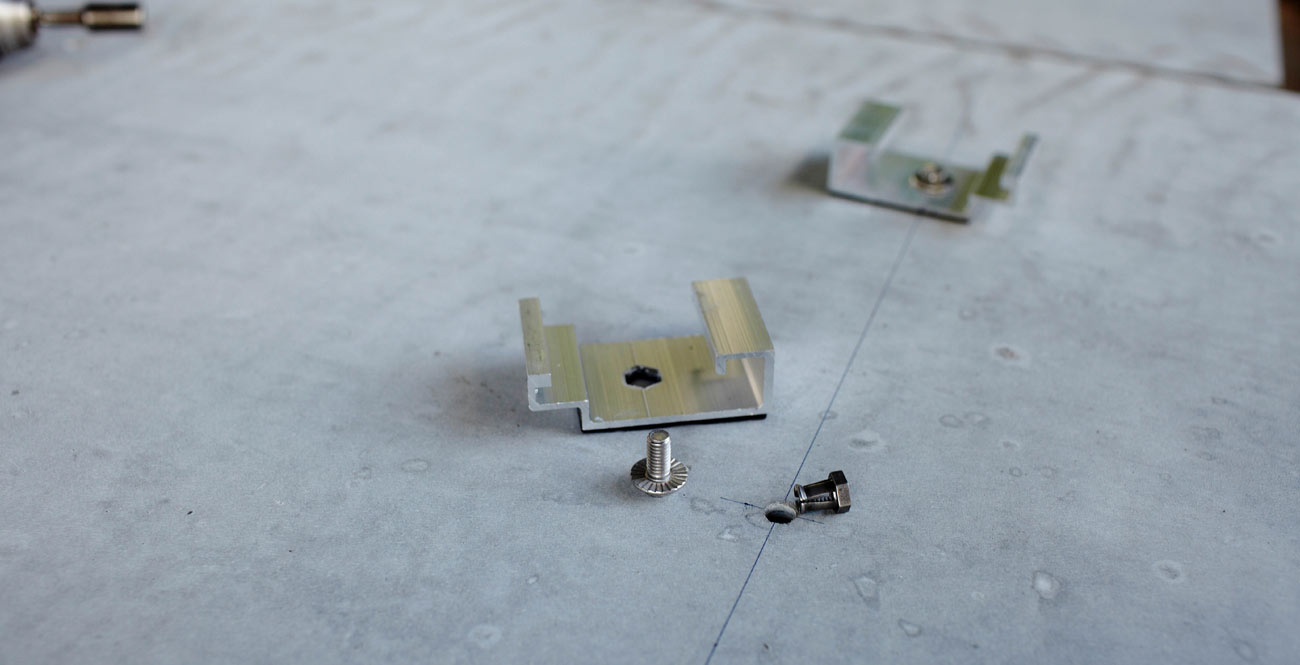

A special drill bit produces the cylindrical hole as well as the conical undercut in one step.

The attachment points are on the rear of the tiles. The KEIL undercut technology is particularly suitable for these requirements: For the Vanke Pavilion in Milan, this intelligent system enables the invisible and, at the same time, very secure attachment of the façade cladding. In addition, the attachment had to be invisible so that the harmonic overall impression of the sinuous building was not impaired. Another aspect for the attachment of the tiles was safety: unexpected breakage of individual tiles or loading from wind gusts and other weather effects must not endanger the structure. Thus an adjustment to the asymmetric shape was possible on site. For this reason the ceramic tiles were fitted on the rear with metal plates and a system which enabled adjustment during installation. The façade cladding must follow the curved shape of the building and create a uniform organic impression. Requirements for the installation of the façade panels They form the base for the subsequent installation of the façade tiles. The latter surround the architectural shape and run parallel below each other. To attach them, steel squares are anchored to the structure of the pavilion and welded to round calendered steel rods. However, the façade becomes complete only with the ceramic tiles. A cladding layer follows consisting of mineralised wood-fibre panels and graphite polystyrene panels covered with render protecting the building from air and water. Profile sheets were mounted horizontally with joint cement and provided with a secondary support layer. The supporting steel structure of the pavilion consists of portals and struts which lend shape to the complex geometry. The flowing curved shape of the building demands a clever façade structure and the thought out installation of the individual elements. The individual elements do not touch and thus create their own shadows.
Keil anchor skin#
A total of 4,200 tiles are used for the scale-like skin of the building. As a result, the colour appearance of the pavilion changes – depending on incidence of light, time of day and viewing angle of the observer – from a deep red to shimmering gold. In addition, the tiles were given a fractal 3D pattern. The mixture of clays, quartzes and feldspars used for the tiles in combination with a metallic glaze rich in oxides provide for a ceramic surface with dynamic effect. The fixing points are not visible so that the special visual impact of the tiles is not adversely impacted. They are attached with the KEIL undercut system. Specially designed 60 x 60 centimetre porcelain stoneware tiles are used for this. The façade cladding of the Pavilion sets the tone.

The interior of the pavilion represents a traditional communal Chinese dining hall, a “Shitang” with its customs and utensils – and thus takes up the theme of the world exhibition. This year, the Chinese real estate company Vanke is represented with its own pavilion.

A total of 155 nations participate in the world exhibition and leave visitors with a lasting impression with the individual and unusual architecture of their national pavilions. The Expo 2015, taking place in Milan until 31 October of this year, has the theme of “Feeding the Planet – Energy for Life”. The pavilion which has been created is an impressive statement of the possibilities offered by technical detail solutions to modern architecture and façade design. The undercut anchors by KEIL of Engelskirchen used for this made the secure and invisible installation possible. The tiles were attached to the curved parametric building with an intelligent anchoring system. The glazed material with its shimmering metallic surface and the dynamic three-dimensional pattern emphasises the impact of the pavilion. Shimmering vermillion stoneware tiles produced by Casalgrande Padana are used for the façade of the complete building. The concept, based on a design of the renowned architect Daniel Libeskind, is a flowing organic shape which originates from a free-hand sketch. An exhibition pavilion with a particularly impressive façade design has been created in Milan for the Expo 2015.


 0 kommentar(er)
0 kommentar(er)
